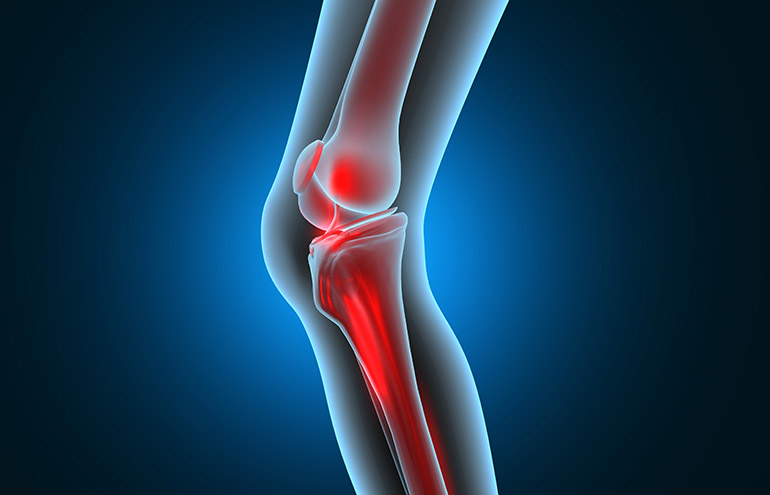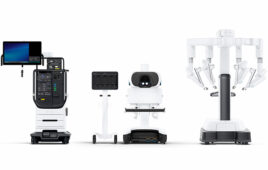|
Listen to this article
|

Knee replacement expectations for surgical robots may be misaligned, says study. Source: Adobe Stock
Robotically assisted total knee arthroplasty, or TKA, has skyrocketed in popularity, but a new analysis of registry data has raised some questions about the benefits of surgical robots for knee-replacement patients.
The analysis of American Joint Replacement Registry (AJRR) data, presented this week at AAOS 2024 in San Francisco, found that revision rates were similar in conventional and surgical robot cementless TKA at two years post-operatively. The study also found that the odds of revision due to infection or mechanical loosening were not significantly different between the two methods.
“A lot of single-surgeon studies show there is improved precision with robotic-assisted TKA,” said Dr. Lucas E. Nikkel, assistant professor of orthopedic surgery at Johns Hopkins Medicine, in a release about the study. “Some studies suggest there may be improved early recovery or less damage to soft tissue.”
“One of the challenges with evaluating this is that many previous studies had significant financial conflicts of interest with the authors,” he noted. “We wanted to evaluate these questions using a registry study to eliminate the potential confounding factors to understand if there is a difference when this technology is applied to a surgery.”
Study casts doubt on a growing market
Studying the results of robotic knee procedures matters because the field is becoming a big business. Orthopedics device giant Stryker has been grabbing market share amid the rising popularity of its Mako robots.
Stryker ended 2023 with 60% of its knee-replacement procedures and 34% of its hip replacements in the U.S. performed using the surgical robot. The percentages were 40% of knees and nearly 20% of hips worldwide.
In recent years, competitors including Johnson & Johnson’s DePuy Synthes business, Zimmer Biomet, and Smith+Nephew have entered the market with their own surgical robotics.
 Learn from Agility Robotics, Amazon, Disney, Teradyne and many more.
Learn from Agility Robotics, Amazon, Disney, Teradyne and many more.
Surgical robot study methodology has limitations
The researchers acknowledged some limitations to the new knee surgery study. National registries such as AJRR rely on the accuracy of data submitted. About 60% of the TKAs on the AJRR register did not report whether or not robotic assistance was used.
In addition, the study did not include younger patients.
The new study identified 9,220 cementless TKAs, nearly half of which were performed with surgical robots. The results — which used a multivariable, mixed-effects logistic regression model with controlling for co-founders — included:
- The odds of all-cause revision at two years following surgery were similar between the conventional and robotic-assisted cohorts (odds ratio 0.8, 95% CI .05 to 1.3; p=0.4).
- The odds of revision due to infection were similar between the two groups (OR 1.47 95% CI 0.8 to 2.6; p=0.19).
- Mechanical loosing was not significantly different between the cohorts (OR 3.2, 95% CI 0.8-12; p=0.09).
“Utilizing patients over age 65, we expected them to have higher failure rates as the potential for biologic fixation may be slightly lower,” Nikkel said. “We found there was no significant differences in the risk of needing another operation within the first two years after surgery with a robotic-assisted or manual technique. This is significant in this population as the likelihood of an early failure is pretty much the same whether robotic assistance is used or not.”
“Some patients desire a robotic-assisted TKA because they’ve heard it is better, but we’ve shown that there isn’t a true benefit in terms of the likelihood of needing another surgery in the early period,” he said.
Editor’s note: This article was syndicated from The Robot Report sibling site Medical Design & Outsourcing.






Tell Us What You Think!